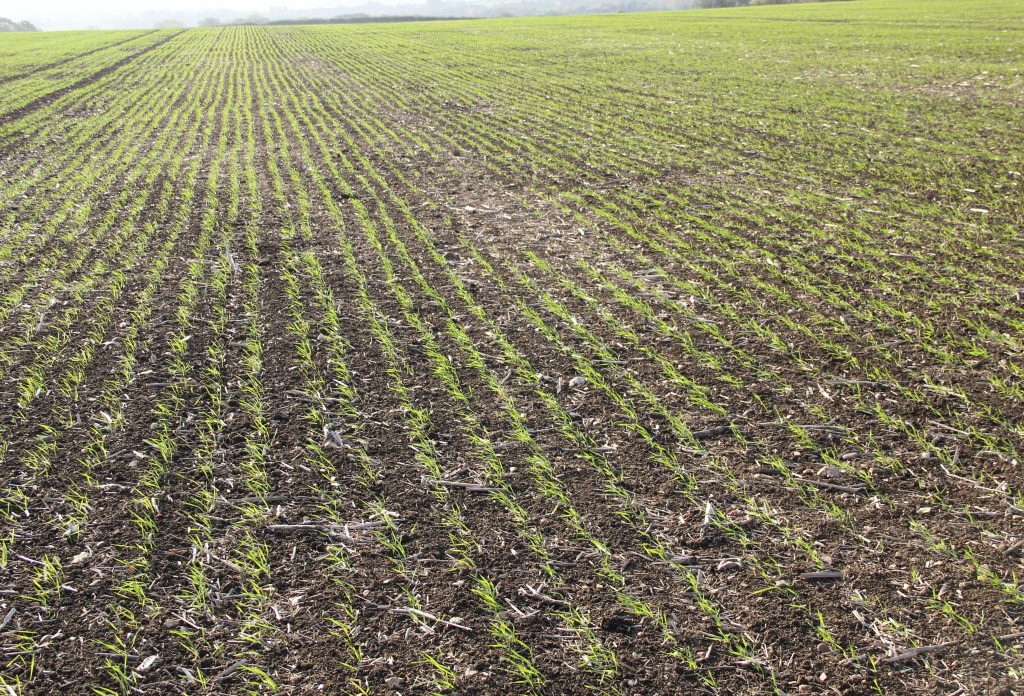Securing the cleanest spring cereals establishment
20th February 2018
A short growing season and limited ability to compensate for setbacks makes it vital to establish spring cereals as rapidly and with as little weed competition as possible. All the more so given the restricted range of in-crop herbicide options available.
A short growing season and limited ability to compensate for setbacks makes it vital to establish spring cereals as rapidly and with as little weed competition as possible. All the more so given the restricted range of in-crop herbicide options available.
This is the experience of Monsanto technical specialist, Barrie Hunt who stresses that failing
to get things right at this stage will seriously compromise spring crop performance as well as overall weed management.
“Spring cropping can only be effective in dealing with black-grass, brome and Italian ryegrass problems if sufficient care and attention is put into their control ahead of and at sowing,” he insisted.
“Yet, it’s all too easy to achieve less-than-ideal control of these weeds in the late winter and early spring. They’re often well-entrenched in over-wintered stubbles and beneath cover crops. Frosting tends to restrict their uptake and translocation abilities. And glyphosate uptake and performance can be markedly reduced under cool conditions and with sudden downpours.
“Letting difficult-to-control weeds off the hook at this stage in the season is particularly inadvisable. They will compete aggressively with spring crops, interfering with the rapid, even establishment essential for the best performance. Having done so, they will go on to produce large numbers of seed heads and a heavy seed return, defeating one of the main objects of spring cropping.”
Under these circumstances, Barrie Hunt sees a no-compromise approach to crop establishment and early weed management as vital; an approach that integrates the most effective stubble cleaning closely with the best-managed spring cultivation and drilling practice to minimise grass weed emergence in the crop.

Barrie Hunt.
He points out that seedbeds which preserve moisture and give the best seed-to-soil contact are far more important than calendar date in spring cereal drilling. This means having both the patience to wait for the best possible soil conditions and the capacity to make the most of them when they occur.
“For stubble cleaning ahead of planting I’d strongly recommend a modern Roundup performance-proven to get more glyphosate into plants more rapidly and reliably under challenging conditions,” he advised. “You also need a formulation with maximum rainfastness to take advantage of every spray window and one which has the shortest cultivation interval for the least possible delay ahead of seedbed preparation and drilling.
“It’s equally important to use the right rate for the job,” added Barrie Hunt. “For established, tillered young black-grass 720 g/ha of glyphosate should be sufficient while up to 1440 g/ha may well be needed for grass weeds already into stem extension as well as tough perennials.
“Water conditioners can improve performance in hard water areas, but remember that no amount of adjuvant can make up for insufficient glyphosate. And whatever you do, don’t treat over-wintered stubbles as a rush job. Take as much time and care as you would in spraying a standing crop of wheat because you have only the one chance to get it right.”
For the most effective pre-planting control Mr Hunt recommends around 100 l/ha of water and a spray on the finer side of medium for the best targeting of seedling weeds.
Cultivation ahead of drilling will help to hasten the demise of most weeds in his experience. It can also be a valuable way of minimising the risk of glyphosate resistance development.
However, he warns that it or significant soil movement at drilling will stimulate the seedbed germination of black-grass, in particular, which could easily lead to just the sort of early weed competition you don’t want with spring cereals.
“To minimise delays choose glyphosates that allow you to cultivate or drill from just six hours where conditions are mild or after two or three days where it’s cold,” he suggested.
“Where drilling has to be delayed for a number of days after pre-planting treatment, consider including an approved glyphosate in your pre-emergence spray too. This can be invaluable in dealing with weeds that can emerge very rapidly with rising soil temperatures. Naturally, of course, application needs to be ahead of any crop emergence.”

